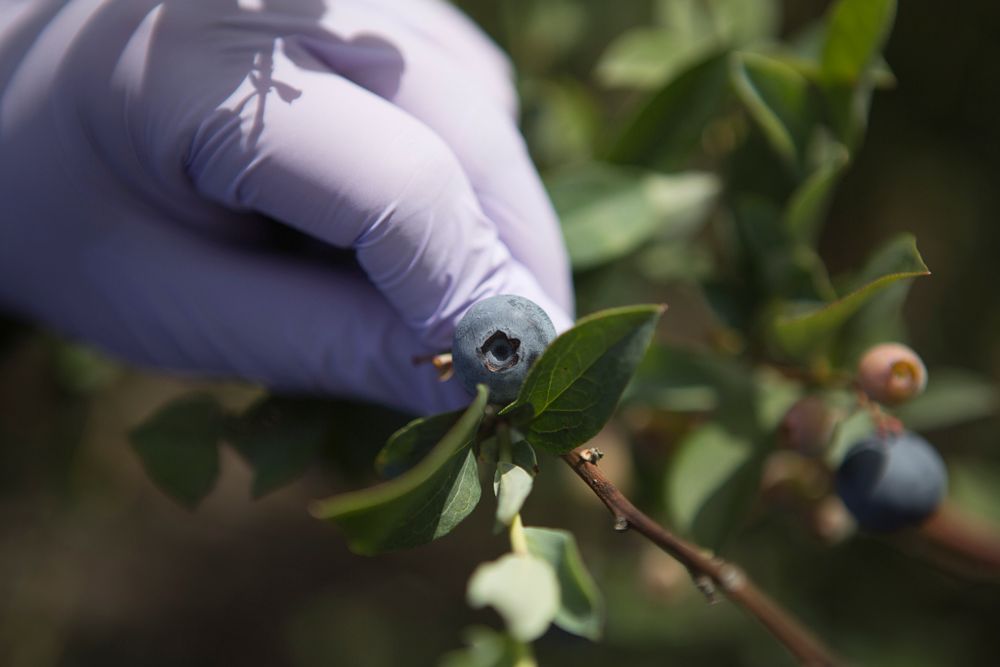By Nancy Hinkle
University of Georgia
Catalpa worms are often called a variety of terms that sound like "catawba" worms. Anglers prize them for their attractiveness to catfish and other fish. Most Southern homesteads have at least one ancient catalpa tree to provide adequate bait for the household.
A distinctive feature of the catalpa worm is the little tail-like "horn" on its rear end. The caterpillars are the larvae of a common gray moth. The larvae are typically white with black splotches, although there are black larvae that have wide, yellowish-white stripes running down the sides.
These larvae feed avidly on catalpa leaves and only on catalpa leaves. They sometimes defoliate the same tree up to three times per summer.
Drizzle of what?
Numbers of larvae can be very high. Standing under a tree with lots of catalpa worms can be like standing in a drizzling rain, with the steady plink-plunk of falling frass (caterpillar poop).Once a larva has fed to fullness, it drops from the tree and pupates in the soil. The following spring, it will emerge as a hummingbird moth called the catalpa sphinx moth. These dull gray moths are nocturnal, so you seldom see them.
Another common caterpillar with a horn on its posterior is the tobacco hornworm, which often eats tomato plants in our gardens.
Considerably larger than a full-grown catalpa worm, the tobacco hornworm feeds mainly on tobacco and tomato plants but can feed on other members of the Solanaceae plant family, too.
The tobacco hornworm has seven white slashes on its side and a red horn. The similar tomato hornworm has eight V-shaped figures along its flank and a black horn.
Big eaters
The last caterpillar stage does 90 percent of the damage tobacco hornworms do to plants. These larvae are seldom noticed until they've been feeding for several days and have stripped the leaves from several branches.The best control is to pick them off the plant and squash them underfoot -- or give them to a kid to play with.
If the larva is left to complete its development, it will feed until it's full, crawl down and burrow into the ground, where it will pupate over winter. It will emerge next spring as a hummingbird moth with a four-inch wingspan.
These moths are called hummingbird moths because they're about the size and shape of hummingbirds and can hover in front of a blossom while inserting their long tongues to suck out the nectar. They also fly fast and dart quickly, like hummingbirds.
You probably won't get any volunteers to help you get rid of tobacco hornworms. But if catalpa worms are a problem on your trees, almost any fisherman will be glad to come get them. You may even be able to negotiate to get part of the catch.
(Nancy Hinkle is a Cooperative Extension entomologist with the University of Georgia College of Agricultural and Environmental Sciences.)






